RECOIL OFFGRID Gear Spartan Blades’ Ronin Torii Review
In This Article
Founded by two retired Green Berets, Spartan Blades has a well-earned reputation for excellence. While many of their designs are jaw-dropping gorgeous, they aren’t just wall hangers or safe queens. Every single one is built for hard use. The Spartan Blades Ronin Torii is an excellent example.
The Torii was designed to be the ultimate close-quarters combat knife, and it’s designed by people who know that subject matter intimately. It’s a collaboration between Spartan Blades and Tu Lam of Ronin Tactics. They wanted to commemorate the Green Berets who have served at Torii Station in Okinawa, Japan. This knife is a tribute to them and is intended to honor the C-1-1 CIF (CINC’s Extremist Force), a unit that has a formidable reputation for close-quarters battle and tactical prowess.
Being the curious sort, I looked up the definition of torii in Japanese. It refers to the traditional gate commonly found at the entrance to or within Shinto shrines. It signifies the gateway between the mundane world and the sacred. It isn’t a stretch to interpret that it refers to the difference between the ordinary and the elite, such as the Green Berets.
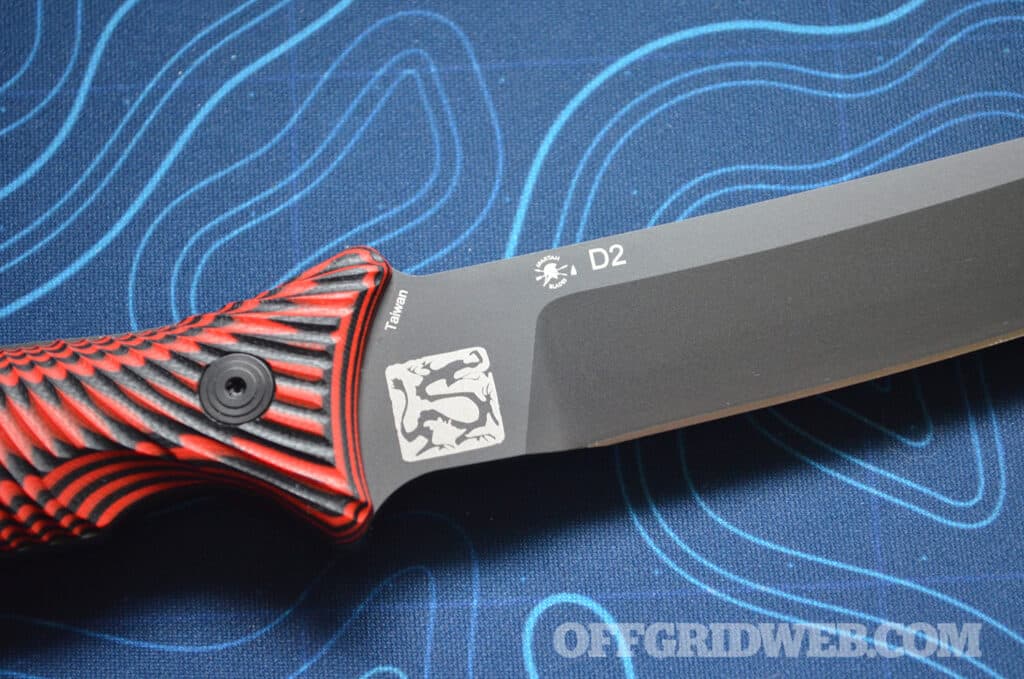
The reverse side of the blade shows the logos for Ronin Tactics as well as Spartan Blades, letting users know this is a collaboration between the two companies.

The Spartan Torii has a decidedly unique attribute. Picking it up and removing it from the Kydex sheath, you immediately feel taller, sturdier, and ready to take on the world. Yeah, it’s that impressive. I’ve been writing about knives for well over a decade and I’ve only run into maybe a handful of other blades that had a similar quality.
It runs 11.5 inches from end to end, with a blade length of 6.5 inches. The D2 steel is 0.1875-inch thick at the spine. The blade is treated with a black powder coat that reduces corrosion concerns. Even at nearly a foot long, the Torii is deceptively light, tipping the scales at a very modest 8.4 ounces. Don’t get me wrong, there’s noticeable heft. But it doesn’t feel like you’re wielding a sharpened pry bar. There’s an elegance present.
At the thickest point, the handle is about 0.625-inch wide. It’s comparable to the venerable Buck 110 Folding Hunter in that regard. The scales are contoured G-10. I went with the red/black option for the scales, rather than the straight black. The texturing is aggressive, yet comfortable. There are no concerns about losing your grip, no matter how wet your hands might get. At the same time, I didn’t experience any hot spots or other discomfort when handling the knife, even after extended periods of time.
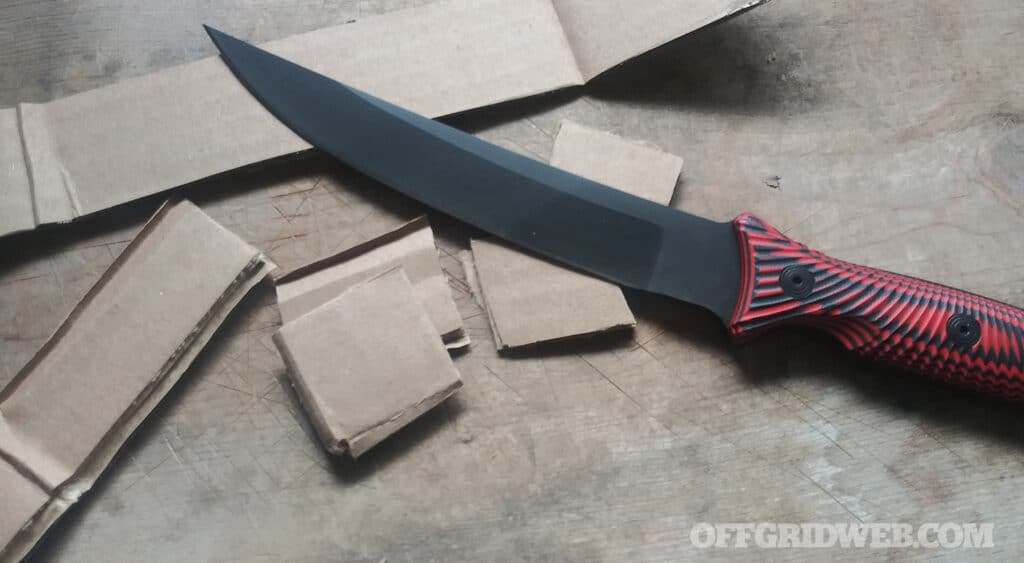
Corrugated cardboard is tough on knives, but the Torii did just fine.
The pattern of the G-10 texturing is reminiscent of Japan’s flag and its rising sun motif. This is rather fitting given the Torii’s evident kwaiken lineage. When Tu Lam was young, he dedicated his life to the samurai code of Bushido. The kwaiken was a dagger that was carried by men and women of the samurai class in ancient Japan. It had a curved trailing point profile and was intended to be a weapon for close-quarter situations where swords would be impractical. And that’s exactly what the Torii is, a close-up weapon capable of devastating damage.
The Torii comes with a well-made injection-molded sheath. In my experience, all too often knife makers treat the sheath like it’s an afterthought at best. It’s just something they toss into the box as a bonus. That’s definitely not the case here. This sheath has had some serious thought put into the design. It comes equipped with two MOLLE straps, which can also be used as belt loops. These can be easily removed, if desired. The sheath features several slots and eyelets so it can be configured for carry in a number of ways.
The retention is solid and tight, yet pulling the Torii free is a piece of cake. The sheath has a small thumb ramp to help with deployment. It’s details like these that make it evident this sheath wasn’t just slapped together at the last minute.
All in all, it is a beautiful knife. It even caught my wife’s eye, which is rare given the number of knives that come across the kitchen table on a monthly basis.
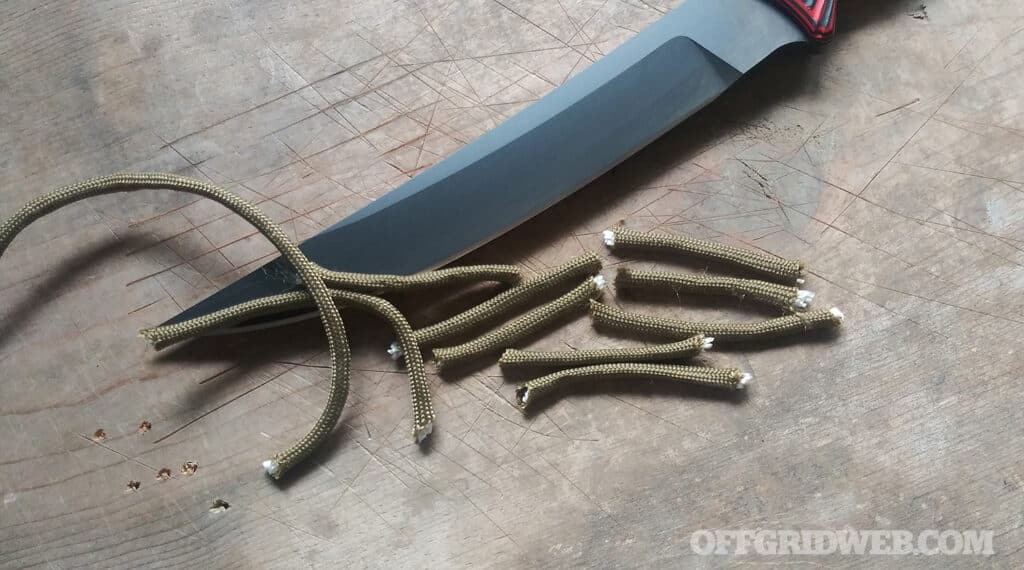
We used push cuts and pull cuts, and the paracord posed no issues at all.
The Spartan Torii is made for battle, no question about it. But I wasn’t about to go around challenging people to a knife fight to see how the blade would perform. So, I had to come up with some other ideas.
First, I picked up a cantaloupe at the grocery store and took it into the backyard. The Torii sliced into it like a laser beam going through butter. There was zero hesitation at any point as the blade cut through the melon. I utilized a few different grips on the Torii, including overhand and reverse, as I cut up the fruit and there were no problems with controlling the blade in any direction.
One of the most common knife chores we run into is cutting cordage. So, I grabbed a hank of paracord and went to work. I started with some push cuts, just resting the cordage on a board and pressing the knife blade through it. The Torii did fine, though I found rocking the blade just a touch was necessary a couple of times. I also sliced through more paracord by running the blade through loops of it, trying to use as much of the blade as possible. No issues at all.
Corrugated cardboard can be murder on a knife’s edge. The glue used when making the cardboard is extremely hard. On top of that, factories producing cardboard aren’t exactly sterile environments. All sorts of dirt and such gets inside those little corrugations. The end result is that cardboard can dull a knife blade quicker than you might think. That makes it a great medium for knife testing.
Well, that and there’s never a lack of cardboard boxes sitting around. The Torii made short work of the box I grabbed. I sliced both with and against the grain of the corrugations. The last couple of crosscuts, the blade didn’t get all the way through, and I had to repeat the cut. This wasn’t entirely surprising, and I don’t consider it a serious problem by any stretch.
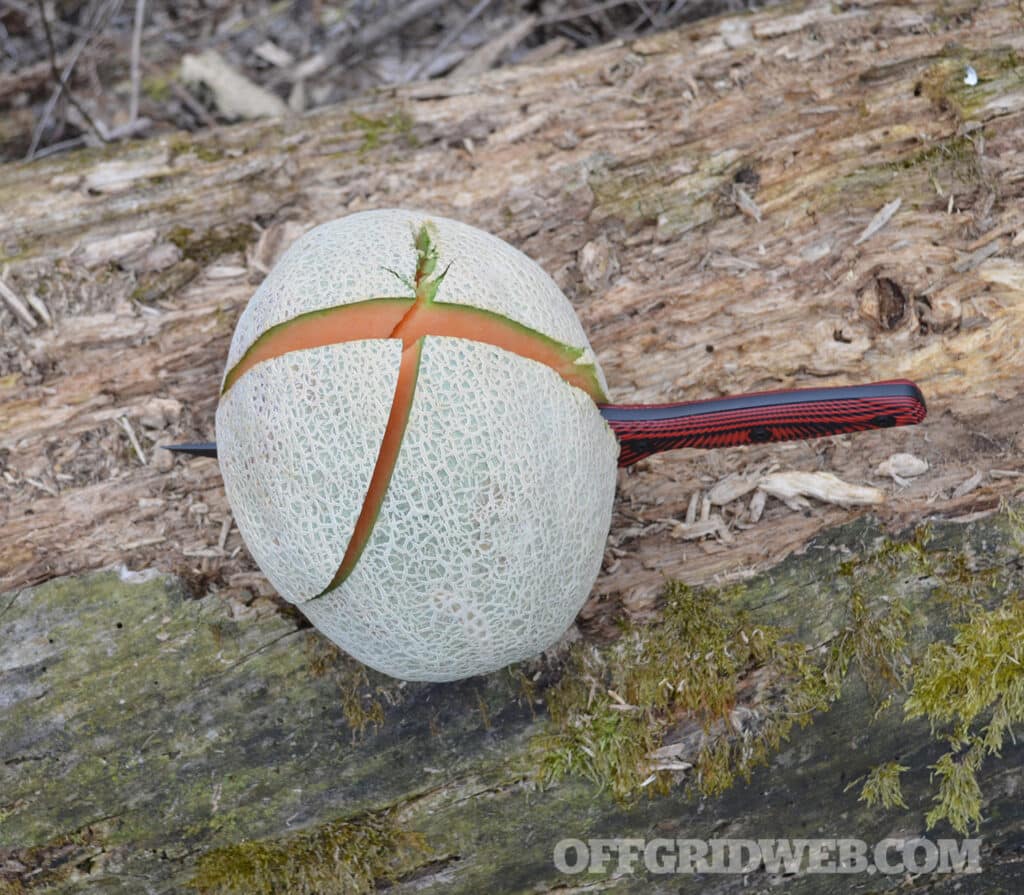
The Torii sliced through cantaloupe like it wasn’t even there.
The Spartan Torii is a battle blade, pure and simple. It’s a high-quality blade that lends confidence. If I were headed to war, or for any other reason felt I might need to rely on a knife to defend my life or the lives of those around me, the Torii would be at the top of the list. The only limitations to its performance would be on the part of the user, and not the fault of the Torii. I can’t recommend it highly enough.
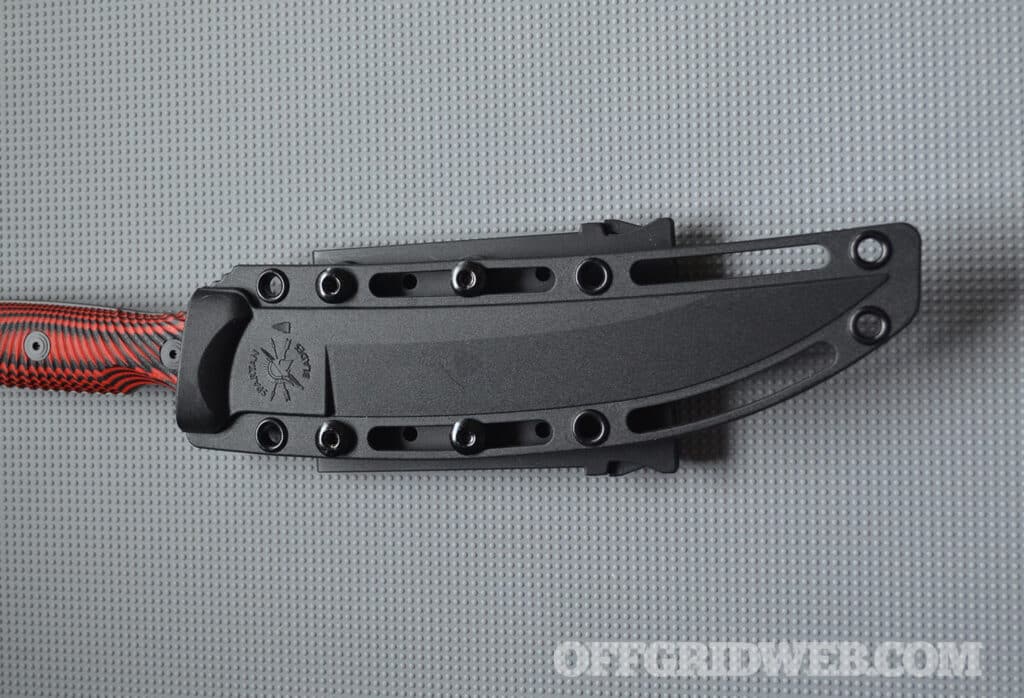
Its injection-molded sheath is just as well-designed as the knife it carries.
Spartan Blades is known for producing very high-quality knives, but they can carry a hefty price tag. Don’t get me wrong, you absolutely get what you pay for. But they can be out of reach for many knife users.
Some years ago, Spartan started a Field Grade line in partnership with their Pineland Cutlery division. The idea was to produce some of their models in more affordable configurations. They don’t skimp on quality, just on maybe a few of the bells and whistles.
Here’s the mystery, though. The Torii is considered part of this Field Grade lineup. Why is this puzzling? After using this knife for a while, I’m baffled how anyone could consider it a budget-grade knife. I’ve spent far more for lesser-quality blades. Granted, many people probably wouldn’t consider $250 to be a budget-friendly price, but those who frequent knife circles will be the first to tell you that is a fairly moderate price for a knife like this.
Jim Cobb is a nationally recognized authority on disaster readiness, as well as a lifelong knife nut. He has been involved with preparedness for nearly 40 years and has developed a reputation for his common-sense approach to the subject. In addition to his numerous books and several hundred magazine articles, Cobb is one of the cohosts of the How to Survive 2025 podcast. He offers a free weekly newsletter called The Survival Weekly Dispatch (jimcobb.substack.com).
Don’t miss essential survival insights—sign up for Recoil Offgrid’s free newsletter today!
Check out our other publications on the web: Recoil | Gun Digest | Blade | RecoilTV | RECOILtv (YouTube)
Editor’s Note: This article has been modified from its original version for the web.
 STAY SAFE: Download a Free copy of the OFFGRID Outbreak Issue
STAY SAFE: Download a Free copy of the OFFGRID Outbreak Issue
No Comments